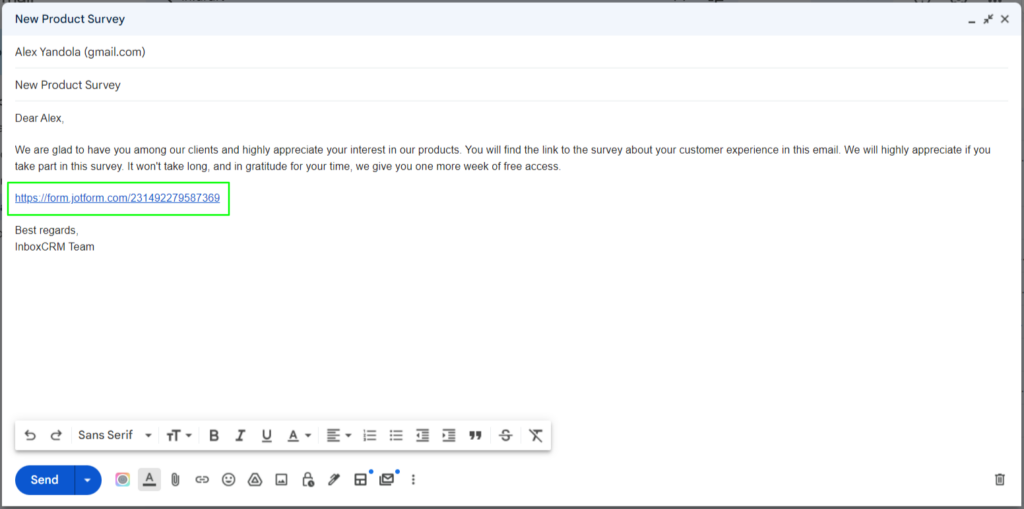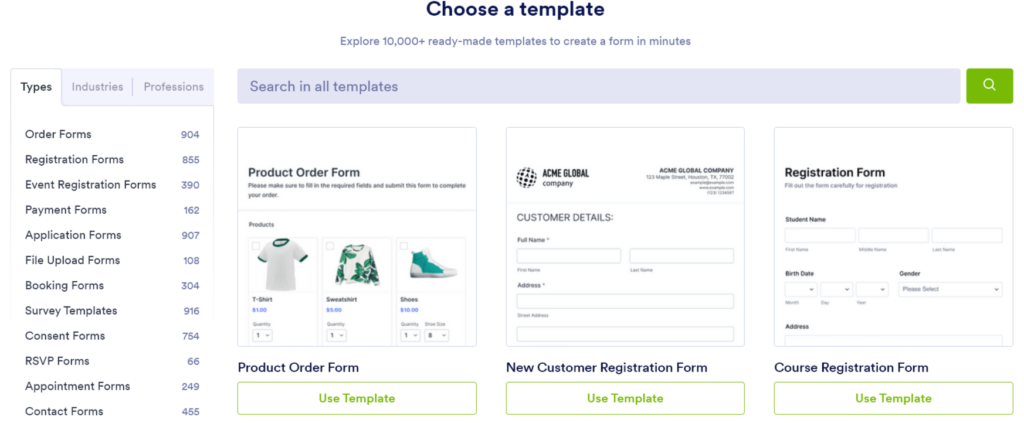An email campaign is a great way to connect with your subscribers. It also keeps them interested in your products or services and can be used to ease them through your sales funnel. It stands to reason that emails would also be a great way to learn more about your customers. While this logic is sound, adding a form to email has been discouraged for a long time. Many believe that forms in emails simply don’t work. Keep reading to learn more about the different challenges associated with email forms and whether it’s possible to embed forms in emails to get responses.
How Does a Form Work?
An email questionnaire is a digital or online questionnaire that businesses include in their emails as a way of collecting more information from the subscriber. The type of email submission form depends on what information is being collected, and this also influences the length of the questionnaire.
For example, forms in your emails can be used to collect personal information on your subscriber, which can be used to personalize future communications. In this situation, it would be a short questionnaire to collect the reader’s name, personal identifier, gender, and other information needed to personalize any further emails. This will usually be a short form.
Alternatively, you can use a web email form to collect feedback on your products or services. This is essential in improving the user experience and identifying areas that need to be addressed. These email submit forms tend to be longer and, depending on your product or service, can be quite detailed.
There are two main ways that businesses can add a form in an email. You can add a link to a webform or embed a form in an email directly.
What Are The Advantages of Adding Forms Directly to Emails
Adding forms in emails can have many advantages when done correctly. People that have subscribed to your email list are already interested in your business, products, or services. This means they’re more likely to respond to a form submission email.
While adding a link to a webform in your email is the most common way marketers share forms with subscribers. In this form of email, the subscriber will find a button that will redirect them from the email to the webform, usually located as a landing page on the sender’s website. However, this creates an extra step that users need to complete. This can harm your engagement rates. Where a good average click-through rate (CTR) is between 5-7%, when adding additional steps, this rate drops to between 2-3%.
Alternatively, sending an embedded email form removes this additional step, and the subscriber can just complete the form and submit an email response without leaving their inbox. Removing this extra step in the process also means you’re creating a shorter path to conversions. Clients and subscribers appreciate content newsletters, content, and questionnaires to be short and sweet rather than a long, dragged-out process.
What Are The Challenges When Adding Forms to Emails
Creating and sending form mails are not without challenges. It’s due to these challenges that questionnaires aren’t used in emails more frequently – despite their obvious benefits. Let’s take a look at some of the challenges when users embed a form in an email.
 Lack of Support
Lack of Support
The first and most notable challenge is the lack of questionnaire support by email clients. Not all email clients will display HTML from emails, meaning that your subscriber might not be able to see all the fields or information in your email submission forms. If they can’t see or read the questionnaire, they can’t complete it. Sometimes, the subscriber will be able to see and read the questionnaire, but the email client lacks the ability to complete the questionnaire, leaving users wondering how to fill out a form in an email.
 Forms Are Considered Spam
Forms Are Considered Spam
Forms in HTML emails are also often flagged as spam due to the nature of their content. Think about how you use questionnaires and the type of information you’re collecting. It’s likely that you’re asking the subscriber to add personal information such as their name, telephone number, email address, and sometimes even residential address. Most service providers have anti-spam measures in place to pick up these types of requests and send those emails straight to spam for being suspicious.
 Warning Messages
Warning Messages
Many email clients also consider email form submission as a security risk. Because users are asked to provide information about themselves, the providers would be irresponsible if they didn’t warn the user. As such, many of these providers notify users with a warning message when they open a form email. These warnings can range from a gentle reminder that you’re sharing sensitive information to warnings that a scam is suspected. Some users may err on the side of caution and assume the email really is a threat and not even check if it’s actually a legitimate one.
Adding Forms and Surveys to Emails
Perhaps you’re wondering how to create an emailable form without using a third-party questionnaire builder. In that case, you’ll need some programming skills as the email forms code will have to be embedded directly into the HTML. If this is something you want to try and you have coding skills, there are numerous guides available online to help you get started.
However, we recommend using a questionnaire builder such as Jotform or GetFeedback. These tools enable you to build a beautiful and interactive questionnaire and embed an email form link or button directly in the body of your email. By clicking on this link or button, your subscriber will be taken from the email to the form.

If you use an HTML builder to create your stunning emails, you can embed a form code directly into your message layout.

If you’re wondering how to create web email forms using one of the above tools, you’re in luck. Most of these tools have been designed with readymade templates, simple drag-and-drop features, and a step-by-step process to guide you as you create web forms to email.

Final Thoughts
Form emailing is a great way to reach out to your subscribers and collect additional information and feedback. This can be used in various ways, from improving services to personalization and more. However, with the challenges we’ve outlined here, your best option is to add an embedded link to your web form in the submission email.
If you’re looking for a way to monitor the effectiveness of your email submit form, try the InboxCRM Chrome extension. This tool enables you to monitor which emails have been opened, how many times, and more.


